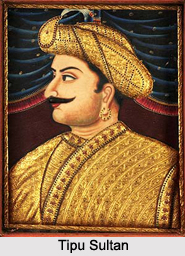 History Of Wayanad district
History Of Wayanad district
In ancient times the Vedar Rajas ruled the land. Later Wayanad came under the rule of Pazhassi Raja of Kottayam Royal Dynasty. The modern history of the Wayanad district is associated with the events that took place during the Mysorean invasion and the long spell of the British rule stretching over a period of about two centuries. There was stern encounter between the British and Pazhassi Rajah. When the state of Kerala was born in 1956, Wayanad was a part of Cannannore district; later in 1957 south Wayanad was added to Kozhikode district and north Wayanad remained with Cannannore district. By mixing the north Wayanad and south Wayanad, the present Wayanad district came into being on the 1st November 1980 comprising of three taluks namely Vythiry, Mananthavady and Sulthan Bathery.
The district Wayanad has an authoritative history, which is formed with an area of 2,132 sq.km. Historians are of the view that the human life existed in these parts were far more organized and structured even ten centuries before Christ. Countless evidences about New Stone Age civilization can be seen on the hills of Wayanad. The two caves of Ampukuthimala located between Sulthan Bathery and Ambalavayal, with pictures on their walls and pictorial writings, speak volumes of the bygone era and civilization. From the 18th century recorded history were available in this region. In ancient times the Rajas of the Veda tribe were used to rule this land. In later days, Wayanad came under the rule of the Pazhassi Rajahs of Kottayam royal dynasty. When Hyder Ali became the ruler of Mysore, he invaded Wayanad and brought it under his sway.
In the days of Tipu, who was popularly known as Tipu Sultan, Wayanad was restored to the Kottayam royal dynasty. But Tipu handed over the entire Malabar region to the British, after he made the Sreerangapattanam treaty with them. This was followed by brutal and bloody encounters between the British and Kerala Varma Pazhassi Rajah of Kottayam. This fight was resulted into a sad end like at the end, the British could get only the dead body of the Rajah, who killed himself somewhere in the interior of the forest. Thus, Wayanad fell into the hands of the British and with it came a new turn in the Home of this area.
The British authorities opened up the highland for cultivation of tea and other cash crops. Roads were laid across the dangerous slopes of Wayanad, from Kozhikode and Thalassery. These roads were extended to the cities of Mysore and Ooty through Gudalur. Through the roads poured in settlers from all parts of Kerala and the virgin forestlands proved a veritable goldmine with incredible yields of cash crops. When the State of Kerala was born in November 1956, Wayanad was part of Kannur district. Later, south Wayanad was added to Kozhikode district.
In order to fulfill the ambitions of the people of Wayanad for development, north Wayanad and South Wayanad were joined together to form the present district of Wayanad. This district came into being on November 1, 1980 as the 12 district of Kerala.






